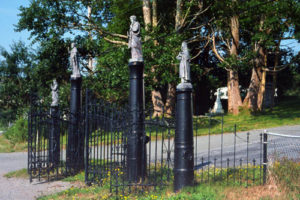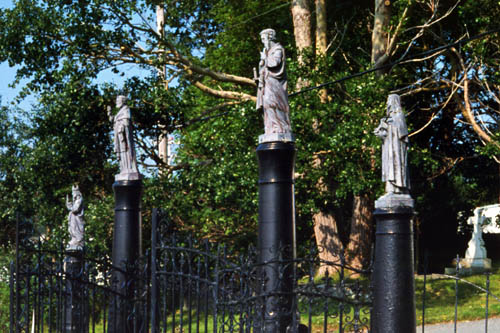 Bay Bulls is one of the oldest communities in Newfoundland and Labrador.
Bay Bulls is one of the oldest communities in Newfoundland and Labrador.
The name first appears in 1592 on a map by Thomas Hood, but the origin is unknown. It is variously attributed to the dovekie bull-bird common in the area, or to derivation from the French Baie de Bois meaning “wooded bay.” Also, according to Bishop Howley, it comes from Jersey fishermen who called it Bay Boulle.
“Fortification of the harbour came in 1638 by Governor David Kirke. In 1655, Bay Bulls was raided by Dutch sailors under Admiral De Ruyter. During King William’s War, the village was attacked twice. In 1696, Monbeton de St. Ovide de Brouillan, the governor of Placentia, attacked Bay Bulls from the sea. Then in 1697 Pierre Le Moyne d’Iberville marched overland from Placentia and attacked Bay Bulls in the Avalon Peninsula Campaign. On June 24, 1762 the French led by Admiral d’Arsac de Ternay, landed seven hundred men who occupied Bay Bulls and marched to St. John’s. Bay Bulls suffered its last invasion on September 29, 1796 when Admiral Richery attempted to storm St. John’s but finding it well defended; he attacked and burned Bay Bulls instead.” (https://www.townofbaybulls.com/history)
The first Catholic church in Bay Bulls was built before 1796 by Vicar Apostolic James O’Donel. It was destroyed by the French in 1796, but was rebuilt the same year.
The current Roman Catholic church was built in 1890 by Rev. Nicholas Roche. The gate was first flanked by cannon from the battles with the French. Later, bronze statues of saints were placed atop, and then referred to as the “Cannonized Saints of Bay Bulls.” The saints are St. Patrick, St. Paul, St. Joseph and Ste.Theresa.
Before the establishment of the Parish of St. Peter and St.Paul in 1922, Bay Bulls was part of the extensive St. John’s Parish.

